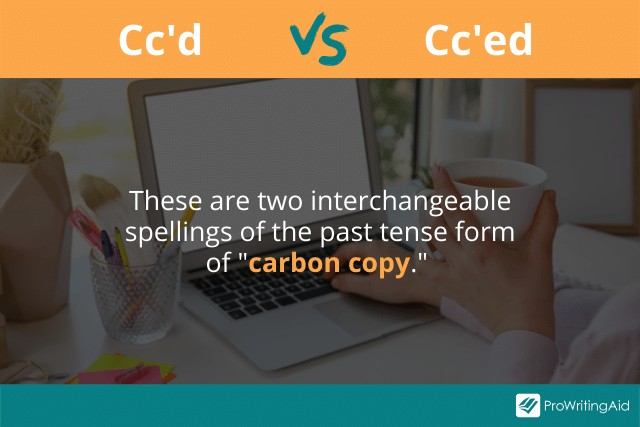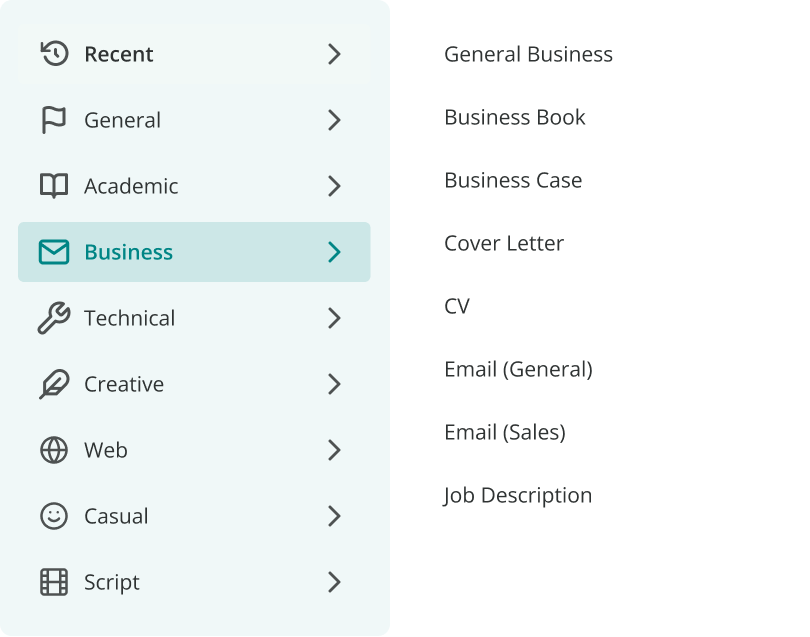
If you’re writing a business email or a promotional email, you might need to use an abbreviation for the verb carbon copied. So is the correct spelling CC’d with a -d or CC’ed with an -ed?
Both spellings are equally correct—or equally incorrect, depending on how you look at it. Both CC’d and CC’ed are past tense conjugations of the verb CC.
These internet words aren’t included in any dictionary, but they’re becoming increasingly common in business writing.
This article will explain the meaning of CC’ed and show you examples of this verb in a sentence.
What Is “CC” in an Email?
When you send an email, you’ll need to put the email address of the primary recipient in the “To” field. Next to the “To” field, you’ll also see two other fields: CC and BCC.
CC, which stands for “carbon copy,” is a way you can send your email to multiple people, not just the primary recipient.
If you add other email addresses in the CC field, those people will all receive carbon copies of the same email. Everyone who receives the email can see a list of all the carbon copied recipients.

BCC, an abbreviation which stands for “blind carbon copy,” is another way you can send your email to an additional person. When you BCC someone, the primary recipients of the email won’t be able to see the BCC’d recipients.
CC’d Meaning
The abbreviation CC is short for “carbon copy.”
The term “carbon copy” originates from the method people used to make copies of the physical letters they wrote.
The standard method was to insert a special sheet of carbon paper between two sheets of blank paper, which allowed ink to transfer onto both sheets, creating a perfect copy of the document.
That way, it was possible to send the same letter to more than one recipient.
In the digital age, the meaning of CC changed to refer to a copy of an email—essentially, the digital equivalent of a physical carbon copy.
CC’d (or CC’ed) is the past tense verb of “carbon copy.” If you’ve carbon copied someone on an email, that means you’ve added them in the CC field.
It’s good etiquette, though not always necessary, to mention who you’ve carbon copied within the body of the email message, so the primary recipients are aware of the other recipients.
For example, if you’re sending an email to schedule a meeting with a colleague, you might mention, “I’ve CC’d my secretary so she can add this meeting to our calendars.”
Examples of CC’d Used Correctly in Sentences
Let’s look at some examples of how to write the words CC’d and CC’ed in a sentence. You can use whichever form of this word you prefer.
“CC’d within is my new intern Madison, who joined our team on Monday.”
“I have CC’d the boss of the organization, who might be able to help you address this matter in more detail.”
“I accidentally CC’ed you on that email. Please disregard it.”
“CC’ed within is my friend Brianna, who has offered to host next week’s activities. Please keep her in the loop in the future.”
“I CC’d you on all of the emails I sent to the team last week, so you could stay in the loop even while you were on leave.”
“I CC’ed you on yesterday’s scheduling email so you can add that meeting to your calendar.”
Conclusion on CC’d vs CC’ed
The English language is constantly evolving. In the digital age, most people will need to know how to use the verb CC’ed.
It’s important to note that some people believe both spellings are incorrect, because they’re new contractions. However, it’s difficult to work in a business setting without seeing these terms used.

If you’re worried about spelling errors, don’t forget to run your business emails through ProWritingAid to make sure your writing is as clear and professional as possible!


